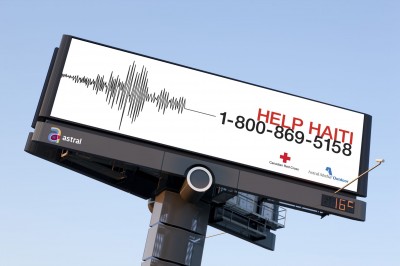By David Hickey
The sign industry and its commercial customers face a growing number of illumination restrictions today, with local officials in Canada and around the world issuing proposals to make signs less bright and more energy-efficient. It is important for the sign industry as a whole to be proactive in developing standard brightness recommendations, particularly for electronic message centres (EMCs).
To help educate officials about these issues, while also protecting sign companies, the International Sign Association (ISA) has, for its part, worked with the Sign Association of Canada (SAC), established recommendations for nighttime EMC brightness, developed industry positions on regulatory issues for internally illuminated signs and shutoff requirements, testified on sign lighting issues for bodies developing new codes—such as the International Green Construction Code (IGCC)—and formed a sign illumination subcommittee.
The regulatory threat
Regulatory initiatives that aim to restrict or control artificial nighttime lighting—such as Toronto’s current Municipal Code, which does not allow commercial signs to be illuminated between 11 p.m. and 7 a.m. unless (a) they represent businesses operating during those hours or (b) they are in ‘special sign districts’—are on the increase at multiple levels of government. Advocacy and lobbying efforts by ‘Dark Skies’ groups have resonated with various regulatory bodies, principally because these groups have sought to link energy conservation with their proposals to mandate the dimming of electric signs.
In the U.S., the American Society of Heating, Refrigeration and Air Conditioning Engineers (ASHRAE) has incorporated requirements for substantial power reductions for electric signs—specifically, those operated at night by businesses that are closed during those hours—into its energy-efficiency standards for new and substantially renovated commercial buildings. ISA was recently successful in convincing ASHRAE to remove these requirements for electric signs, but nevertheless, it is widely anticipated ASHRAE may adopt a requirement in the future for substantial electrical load reductions for signs.

With the proliferation of digital billboards in recent years, some local authorities have moved to regulate sign brightness through new standards. Photo courtesy Astral Out-of-Home
Such issues are not simply theoretical for the Canadian sign industry. In fact, the Canadian Standards Association’s (CSA’s) technical committee for the performance of lighting equipment recently established a subcommittee with the objective of developing a new standard for the performance levels of stationary backlit electric signs.
CSA’s subcommittee reports it is pursuing the new standard to reap “significant energy savings from an increase in energy efficiency of hard-wired luminous signs available on the market and the phase-out from the market of signs that do not meet consensus-based performance levels.” Unfortunately, CSA’s process has shown some significant flaws from the start, including the claim that “outdoor signage represents 20 per cent of total outdoor lighting” (a wild overestimation) and the citing of a Dark Skies model outdoor lighting ordinance as a research source. ISA is working with SAC to represent the on-premise sign industry’s interests as CSA moves forward with its process.






